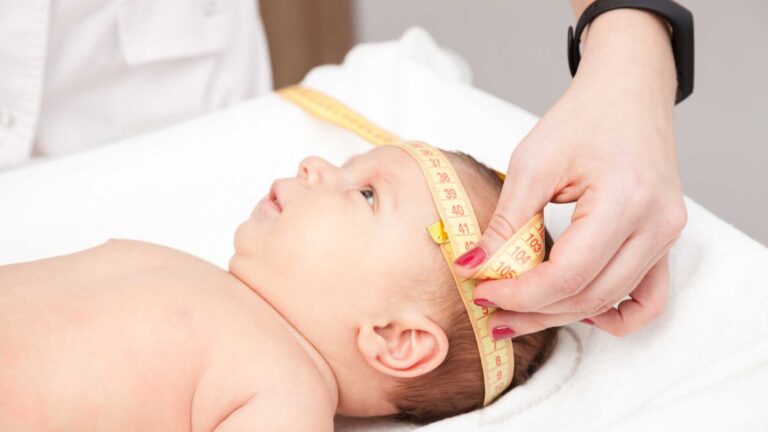Is there a correlation between macrocephaly and autism?
As we learn more about autism, we can draw connections to other conditions, such as the link between autism and head size, clinically referred to as macrocephaly. The truth is that some patterns show that individuals with autism tend to have a larger head size compared to their neurotypical counterparts.
Understanding everything about autism, from early diagnosis to intervention, signs, and treatment alternatives, can be confusing, especially if you are starting on this journey of neurodivergence.
Fortunately, at ABA Centers of America, we focus on clearing up those doubts and answering questions often common for families coping with autism. We guide you toward a more inclusive world by providing up-to-date information and options like ABA therapy to help your loved one on the spectrum.
In this blog, we will discuss the link between autism and head size. We will explore the characteristics of this relationship, what the research says about it, and how ABA therapy can offer practical support in treating autism. So, let’s dive in and learn more.
What is Macrocephaly?
When examining the correlation between head size and autism, we frequently encounter the term macrocephaly. But what exactly is macrocephaly? As defined by the National Library of Medicine, macrocephaly is a medical condition that occurs when a baby’s head circumference is greater than the 97th percentile, which is two standard deviations above the average. This condition means that their head is more substantial than that of 97% of children of the same age and gender.
If your baby has a larger head size than usual, it can indicate an underlying medical condition. However, it’s important to note that a bigger head size can also be a hereditary trait within your family, called benign familial macrocephaly, which is not harmful and doesn’t require treatment.
The age at which macrocephaly develops is unknown. Still, the Journal of the American Academy of Child & Adolescent Psychiatry findings suggest that it is usually not present at or shortly after birth. It has been observed in children and adults with autism, making it one of the most widely replicated biological features in autism disorders.
What is the Relation Between Autism and Head Size?
The relationship between head size and autism has been the subject of extensive research in recent years. A Psychiatry Research: Neuroimaging study has found varying degrees of correlation, suggesting that head circumference may be a potential endo-phenotype in autism
On the other hand, the study titled Macrocephaly in Children and Adults With Autism suggests that many people with autism tend to show macrocephaly. The study also points out that some children with autism exhibit abnormal rates of head growth during early and middle childhood, accounting for approximately 37% of cases.
It’s important to note that measuring head size alone shouldn’t be a definitive diagnostic criterion. Also, it is essential to clarify that not all individuals with autism exhibit macrocephaly.
3 Factors that Suggest Head Size in Autism
The link between head size and autism is still under investigation, with the underlying causes not yet fully understood. However, three primary factors may explain this association:
- Rapid Brain Development: Larger head circumference is often observed in individuals with autism and could stem from an accelerated rate of brain growth during early developmental stages. Individuals with autism have distinct differences in brain structure and connectivity patterns, which can increase in head size.
- Genetic Influences: Genetics play a crucial role in the onset of autism. Certain genetic conditions that are often associated with autism, such as PTEN mutations and 22q11.2 deletion syndrome, have also been linked to macrocephaly. These genetic variances could potentially contribute to both the increased head size and the development of autism.
- Neuroanatomical Variations: Autism is a complex neurodevelopmental disorder marked by changes in brain structure and function. The enlarged head circumference in autistic individuals may correlate with specific neuroanatomical variations. These could encompass abnormalities in brain areas responsible for social communication, language processing, and sensory integration.
Having a good understanding of the connection between head size and autism is crucial for proper diagnosis and effective intervention strategies. This knowledge can help identify distinct subgroups within the autism spectrum and steer the development of personalized treatment approaches. However, it’s crucial to consider head size alongside other clinical characteristics and assessments when evaluating individuals for autism to get a comprehensive diagnosis.
The Importance of Treating Autism
The association between head size and autism is still a matter of study, and the underlying causes remain to be fully understood. While research continues in this area, it’s essential to focus on the diverse treatment approaches available for autism.
Applied Behavior Analysis (ABA) is a widely recognized frontline treatment for autism that helps individuals acquire necessary skills and addresses various behaviors. This evidence-based approach is highly personalized, enabling targeted interventions to address specific areas of concern. For instance, it can help improve communication skills social interactions, and reduce challenging behaviors.
One of the unique aspects of ABA therapy is that it breaks down skills into manageable steps, making it easier for individuals to learn and master new skills. This approach fosters skill generalization, which refers to applying skills learned in one context to other situations.
Besides, ABA therapy involves parents and caregivers in the process. This connection not only allows them to support their loved one’s progress but also helps ensure that the skills learned in therapy are applicable at home and in other environments.
ABA Centers of America an Alternative for Neurodiverse Individuals
At ABA Centers of America, we understand the unique needs of neurodiverse individuals and offer comprehensive support and evidence-based interventions, including ABA therapy, to empower individuals on the autism spectrum and their families in their journey towards improved skills, independence, and a more inclusive world.
Allow us to improve the life of your loved one. Call us at 844-923-4222 or request a free consultation with our team.
Your partnership is the key to unlocking a world of possibilities for your loved ones on the autism spectrum.







